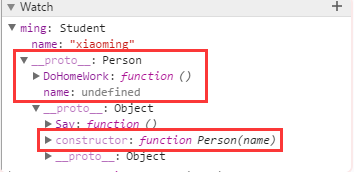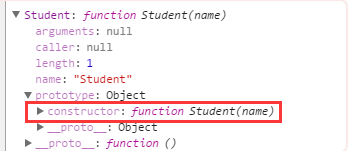您好,登錄后才能下訂單哦!
您好,登錄后才能下訂單哦!
今天就跟大家聊聊有關如何從一個組件的實現來深刻理解JS中的繼承,可能很多人都不太了解,為了讓大家更加了解,小編給大家總結了以下內容,希望大家根據這篇文章可以有所收獲。
其實,無論是寫什么語言的程序員,最終的目的,都是把產品或代碼封裝到一起,提供接口,讓使用者很舒適的實現功能。所以對于我來說,往往頭疼的不是寫代碼,而是寫注釋和文檔!如果接口很亂,肯定會頭疼一整天。
JavaScript 最初是以 Web 腳本語言面向大眾的,盡管現在出了服務器端的 nodejs,但是單線程的性質還沒有變。對于一個 Web 開發人員來說,能寫一手漂亮的組件極為重要。GitHub 上那些開源且 stars 過百的 Web 項目或組件,可讀性肯定非常好。
從一個例子來學習寫組件
組件教程的參考來自于 GitHub 上,通俗易懂,鏈接。
要實現下面這個功能,對一個 input 輸入框的內容進行驗證,只有純數字和字母的組合才是被接受的,其他都返回 failed:

全局變量寫法
這種寫法完全沒有約束,基本所有人都會,完全沒啥技巧:
// html <input type="text" id="input"/> // javascript var input = document.getElementById("input"); function getValue(){ return input.value; } function render(){ var value = getValue(); if(!document.getElementById("show")){ var append = document.createElement('span'); append.setAttribute("id", "show"); input.parentNode.appendChild(append); } var show = document.getElementById("show"); if(/^[0-9a-zA-Z]+$/.exec(value)){ show.innerHTML = 'Pass!'; }else{ show.innerHTML = 'Failed!'; } } input.addEventListener('keyup', function(){ render(); });缺點自然不用多說,變量沒有任何隔離,嚴重污染全局變量,雖然可以達到目的,但極不推薦這種寫法。
對象隔離作用域
鑒于以上寫法的弊端,我們用對象來隔離變量和函數:
var obj = { input: null, // 初始化并提供入口調用方法 init: function(config){ this.input = document.getElementById(config.id); this.bind(); //鏈式調用 return this; }, // 綁定 bind: function(){ var self = this; this.input.addEventListener('keyup', function(){ self.render(); }); }, getValue: function(){ return this.input.value; }, render: function(){ var value = this.getValue(); if(!document.getElementById("show")){ var append = document.createElement('span'); append.setAttribute("id", "show"); input.parentNode.appendChild(append); } var show = document.getElementById("show"); if(/^[0-9a-zA-Z]+$/.exec(value)){ show.innerHTML = 'Pass!'; }else{ show.innerHTML = 'Failed!'; } } } window.onload = function(){ obj.init({id: "input"}); }相對于開放式的寫法,上面的這個方法就比較清晰了。有初始化,有內部函數和變量,還提供入口調用方法。
新手能實現上面的方法已經很不錯了,還記得當初做百度前端學院題目的時候,基本就是用對象了。
不過這種方法仍然有弊端。obj 對象中的方法都是公開的,并不是私有的,其他人寫的代碼可以隨意更改這些內容。當多人協作或代碼量很多時,又會產生一系列問題。
函數閉包的寫法
var fun = (function(){ var _bind = function(obj){ obj.input.addEventListener('keyup', function(){ obj.render(); }); } var _getValue = function(obj){ return obj.input.value; } var InputFun = function(config){}; InputFun.prototype.init = function(config){ this.input = document.getElementById(config.id); _bind(this); return this; } InputFun.prototype.render = function(){ var value = _getValue(this); if(!document.getElementById("show")){ var append = document.createElement('span'); append.setAttribute("id", "show"); input.parentNode.appendChild(append); } var show = document.getElementById("show"); if(/^[0-9a-zA-Z]+$/.exec(value)){ show.innerHTML = 'Pass!'; }else{ show.innerHTML = 'Failed!'; } } return InputFun; })(); window.onload = function(){ new fun().init({id: 'input'}); }函數閉包寫法的好處都在自執行的閉包里,不會受到外面的影響,而且提供給外面的方法包括 init 和 render。比如我們可以像 JQuery 那樣,稍微對其改造一下:
var $ = function(id){ // 這樣子就不用每次都 new 了 return new fun().init({'id': id}); } window.onload = function(){ $('input'); }還沒有涉及到原型,只是簡單的閉包。
基本上,這已經是一個合格的寫法了。
面向對象
雖然上面的方法以及夠好了,但是我們的目的,是為了使用面向對象。面向對象一直以來都是被認為***的編程方式,如果每個人的代碼風格都相似,維護、查看起來就非常的方便。
但是,我想在介紹面向對象之前,先來回憶一下 JS 中的繼承(實現我們放到***再說)。
入門級的面向對象
提到繼承,我首先想到的就是用 new 來實現。還是以例子為主吧,人->學生->小學生,在 JS 中有原型鏈這么一說,__proto__ 和 prototype ,對于原型鏈就不過多闡述,如果不懂的可以自己去查閱一些資料。
在這里,我還是要說明一下 JS 中的 new 構造,比如 var student = new Person(name),實際上有三步操作:
var student = {}; student.__proto__ = Person.prototype; Person.call(student, name)得到的 student 是一個對象,__proto__執行 Person 的 prototype,Person.call 相當于 constructor。
function Person(name){ this.name = name; } Person.prototype.Say = function(){ console.log(this.name + ' can say!'); } var ming = new Person("xiaoming"); console.log(ming.__proto__ == Person.prototype) //true new的第二步結果 console.log(ming.name) // 'xiaoming' new 的第三步結果 ming.Say() // 'xiaoming can say!' proto 向上追溯的結果利用 __proto__ 屬性的向上追溯,可以實現一個基于原型鏈的繼承。
function Person(name){ this.name = name; } Person.prototype.Say = function(){ console.log(this.name + ' can say!'); } function Student(name){ Person.call(this, name); //Person 的屬性賦值給 Student } Student.prototype = new Person(); //順序不能反,要在最前面 Student.prototype.DoHomeWork = function(){ console.log(this.name + ' can do homework!'); } var ming = new Student("xiaoming"); ming.DoHomeWork(); //'xiaoming can do homework!' ming.Say(); //'xiaoming can say!'大概剛認識原型鏈的時候,我也就只能寫出這樣的水平了,我之前的文章。
打開調試工具,看一下 ming 都有哪些東西:
ming name: "xiaoming" __proto__: Person DoHomeWork: () name: undefined //注意這里多了一個 name 屬性 __proto__: Object Say: () constructor: Person(name) __proto__: Object
當調用 ming.Say() 的時候,剛好 ming.__proto__.__proto__ 有這個屬性,這就是鏈式調用的原理,一層一層向下尋找。
這就是最簡單的繼承了。
面向對象的進階
來看一看剛才那種做法的弊端。
沒有實現傳統面向對象該有的 super 方法來調用父類方法,鏈式和 super 方法相比還是有一定缺陷的;
造成過多的原型屬性(name),constructor 丟失(constructor 是一個非常重要的屬性,MDN)。
因為鏈式是一層層向上尋找,知道找到為止,很明顯 super 直接調用父類更具有優勢。
// 多了原型屬性 console.log(ming.__proto__) // {name: undefined}為什么會多一個 name,原因是因為我們執行了 Student.prototype = new Person();,而 new 的第三步會執行一個 call 的函數,會使得 Student.prototype.name = undefined,恰好 ming.__proto__ 指向 Student 的 prototype,用了 new 是無法避免的。
// 少了 constructor console.log(ming.constructor == Person) //true console.log(ming.constructor == Student) // false
這也很奇怪,明明 ming 是繼承與 Student,卻返回 false,究其原因,Student.prototype 的 constructor 方法丟失,向上找到了Student.prototype.__proto__ 的 constructor 方法。

再找原因,這句話導致了 Student.prototype 的 constructor 方法丟失:
Student.prototype = new Person();
在這句話之前打一個斷點,曾經是有的,只是被替換掉了:

找到了問題所在,現在來改進:
// fn 用來排除多余的屬性(name) var fn = function(){}; fn.prototype = Person.prototype; Student.prototype = new fn(); // 重新添上 constructor 屬性 Student.prototype.constructor = Student;用上面的繼承代碼替換掉之前的 Student.prototype = new Person();
面向對象的封裝
我們不能每一次寫代碼的時候都這樣寫這么多行來繼承吧,所以,于情于理,還是來進行簡單的包裝:
function classInherit(subClass, parentClass){ var fn = function(){}; fn.prototype = parentClass.prototype; subClass.prototype = new fn(); subClass.prototype.constructor = subClass; } classInherit(Student, Person);哈哈,所謂的包裝,就是重抄一下代碼。
進一步完善面向對象
上面的問題只是簡單的解決了多余屬性和 constructor 丟失的問題,而 supper 問題仍然沒有改進。
舉個栗子,來看看 supper 的重要,每個人都會睡覺,sleep 函數是人的一個屬性,學生分為小學生和大學生,小學生晚上 9 點睡覺,大學生 12 點睡覺,于是:
Person.prototype.Sleep = function(){ console.log('Sleep!'); } function E_Student(){}; //小學生 function C_Student(){}; //大學生 classInherit(E_Student, Person); classInherit(C_Student, Person); //重寫 Sleep 方法 E_Student.prototype.Sleep = function(){ console.log('Sleep!'); console.log('Sleep at 9 clock'); } C_Student.prototype.Sleep = function(){ console.log('Sleep!'); console.log('Sleep at 12 clock'); }對于 Sleep 方法,顯得比較混亂,而我們想要通過 supper,直接調用父類的函數:
E_Student.prototype.Sleep = function(){ this._supper(); //supper 方法 console.log('Sleep at 9 clock'); } C_Student.prototype.Sleep = function(){ this._supper(); //supper 方法 console.log('Sleep at 12 clock'); }不知道對 supper 的理解正不正確,總感覺怪怪的,歡迎指正!
來看下 JQuery 之父是如何 class 的面向對象,原文在這,源碼如下。
/* Simple JavaScript Inheritance * By John Resig http://ejohn.org/ * MIT Licensed. */ // Inspired by base2 and Prototype (function(){ // initializing 開關很巧妙的來實現調用原型而不構造,還有回掉 var initializing = false, fnTest = /xyz/.test(function(){xyz;}) ? /\b_super\b/ : /.*/; // The base Class implementation (does nothing) // 全局,this 指向 window,***的父類 this.Class = function(){}; // Create a new Class that inherits from this class // 繼承的入口 Class.extend = function(prop) { //保留當前類,一般是父類的原型 var _super = this.prototype; // Instantiate a base class (but only create the instance, // don't run the init constructor) //開關 用來使原型賦值時不調用真正的構成流程 initializing = true; var prototype = new this(); initializing = false; // Copy the properties over onto the new prototype for (var name in prop) { // Check if we're overwriting an existing function //對函數判斷,將屬性套到子類上 prototype[name] = typeof prop[name] == "function" && typeof _super[name] == "function" && fnTest.test(prop[name]) ? (function(name, fn){ //用閉包來存儲 return function() { var tmp = this._super; // Add a new ._super() method that is the same method // but on the super-class this._super = _super[name]; // The method only need to be bound temporarily, so we // remove it when we're done executing //實現同名調用 var ret = fn.apply(this, arguments); this._super = tmp; return ret; }; })(name, prop[name]) : prop[name]; } // 要返回的子類 function Class() { // All construction is actually done in the init method if ( !initializing && this.init ) this.init.apply(this, arguments); } //前面介紹過的,繼承 Class.prototype = prototype; Class.prototype.constructor = Class; Class.extend = arguments.callee; return Class; }; })();這個時候就可以很輕松的實現面向對象,使用如下:
var Person = Class.extend({ init: function(name){ this.name = name; }, Say: function(name){ console.log(this.name + ' can Say!'); }, Sleep: function(){ console.log(this.name + ' can Sleep!'); } }); var Student = Person.extend({ init: function(name){ this._super('Student-' + name); }, Sleep: function(){ this._super(); console.log('And sleep early!'); }, DoHomeWork: function(){ console.log(this.name + ' can do homework!'); } }); var p = new Person('Li'); p.Say(); //'Li can Say!' p.Sleep(); //'Li can Sleep!' var ming = new Student('xiaoming'); ming.Say(); //'Student-xiaoming can Say!' ming.Sleep();//'Student-xiaoming can Sleep!' // 'And sleep early!' ming.DoHomeWork(); //'Student-xiaoming can do homework!'除了 John Resig 的 supper 方法,很多人都做了嘗試,不過我覺得 John Resig 的實現方式非常的妙,也比較貼近 supper 方法,我本人也用源碼調試了好幾個小時,才勉強能理解。John Resig 的頭腦真是令人佩服。
ES6 中的 class
在 JS 中,class 從一開始就屬于關鍵字,在 ES6 終于可以使用 class 來定義類。比如:
class Point { constructor(x, y){ this.x = x; this.y = y; } toString(){ return '(' + this.x + ',' + this.y + ')'; } } var p = new Point(3, 4); console.log(p.toString()); //'(3,4)'更多有關于 ES6 中類的使用請參考阮一峰老師的 Class基本語法。
其實 ES6 中的 class 只是寫對象原型的時候更方便,更像面向對象,class 的功能 ES5 完全可以做到,比如就上面的例子:
typeof Point; //'function' Point.prototype; /* |Object |--> constructor: function (x, y) |--> toString: function() |--> __proto__: Object */
和用 ES5 實現的真的沒有什么差別,反而現在流行的一些庫比 ES6 的 class 能帶來更好的效益。
回到最開始的組件問題
那么,說了這么多面向對象,現在回到最開始的那個組件的實現——如何用面向對象來實現。
還是利用 John Resig 構造 class 的方法:
var JudgeInput = Class.extend({ init: function(config){ this.input = document.getElementById(config.id); this._bind(); }, _getValue: function(){ return this.input.value; }, _render: function(){ var value = this._getValue(); if(!document.getElementById("show")){ var append = document.createElement('span'); append.setAttribute("id", "show"); input.parentNode.appendChild(append); } var show = document.getElementById("show"); if(/^[0-9a-zA-Z]+$/.exec(value)){ show.innerHTML = 'Pass!'; }else{ show.innerHTML = 'Failed!'; } }, _bind: function(){ var self = this; self.input.addEventListener('keyup', function(){ self._render(); }); } }); window.onload = function(){ new JudgeInput({id: "input"}); }但是,這樣子,基本功能算是實現了,關鍵是不好擴展,沒有面向對象的精髓。所以,針對目前的情況,我們準備建立一個 Base 基類,init 表示初始化,render 函數表示渲染,bind 函數表示綁定,destory 用來銷毀,同時 get、set 方法提供獲得和更改屬性:
var Base = Class.extend({ init: function(config){ this._config = config; this.bind(); }, get: function(key){ return this._config[key]; }, set: function(key, value){ this._config[key] = value; }, bind: function(){ //以后構造 }, render: function(){ //以后構造 }, destory: function(){ //定義銷毀方法 } });基于這個 Base,我們修改 JudgeInput 如下:
var JudgeInput = Base.extend({ _getValue: function(){ return this.get('input').value; }, bind: function(){ var self = this; self.get('input').addEventListener('keyup', function(){ self.render(); }); }, render: function(){ var value = this._getValue(); if(!document.getElementById("show")){ var append = document.createElement('span'); append.setAttribute("id", "show"); input.parentNode.appendChild(append); } var show = document.getElementById("show"); if(/^[0-9a-zA-Z]+$/.exec(value)){ show.innerHTML = 'Pass!'; }else{ show.innerHTML = 'Failed!'; } } }); window.onload = function(){ new JudgeInput({input: document.getElementById("input")}); }比如,我們后期修改了判斷條件,只有當長度為 5-10 的時候才會返回 success,這個時候能很快定位到 JudgeInput 的 render 函數:
render: function(){ var value = this._getValue(); if(!document.getElementById("show")){ var append = document.createElement('span'); append.setAttribute("id", "show"); input.parentNode.appendChild(append); } var show = document.getElementById("show"); //修改正則即可 if(/^[0-9a-zA-Z]{5,10}$/.exec(value)){ show.innerHTML = 'Pass!'; }else{ show.innerHTML = 'Failed!'; } }以我目前的能力,只能理解到這里了。
關于一個組件的寫法,從入門級到最終版本,一波三折,不僅要考慮代碼的實用性,還要兼顧后期維護。JS 中實現面向對象,剛接觸 JS 的時候,我能用簡單的原型鏈來實現,后來看了一些文章,發現了不少問題,在看 John Resig 的 Class,感觸頗深。還好,現在目的是實現了。
看完上述內容,你們對如何從一個組件的實現來深刻理解JS中的繼承有進一步的了解嗎?如果還想了解更多知識或者相關內容,請關注億速云行業資訊頻道,感謝大家的支持。
免責聲明:本站發布的內容(圖片、視頻和文字)以原創、轉載和分享為主,文章觀點不代表本網站立場,如果涉及侵權請聯系站長郵箱:is@yisu.com進行舉報,并提供相關證據,一經查實,將立刻刪除涉嫌侵權內容。